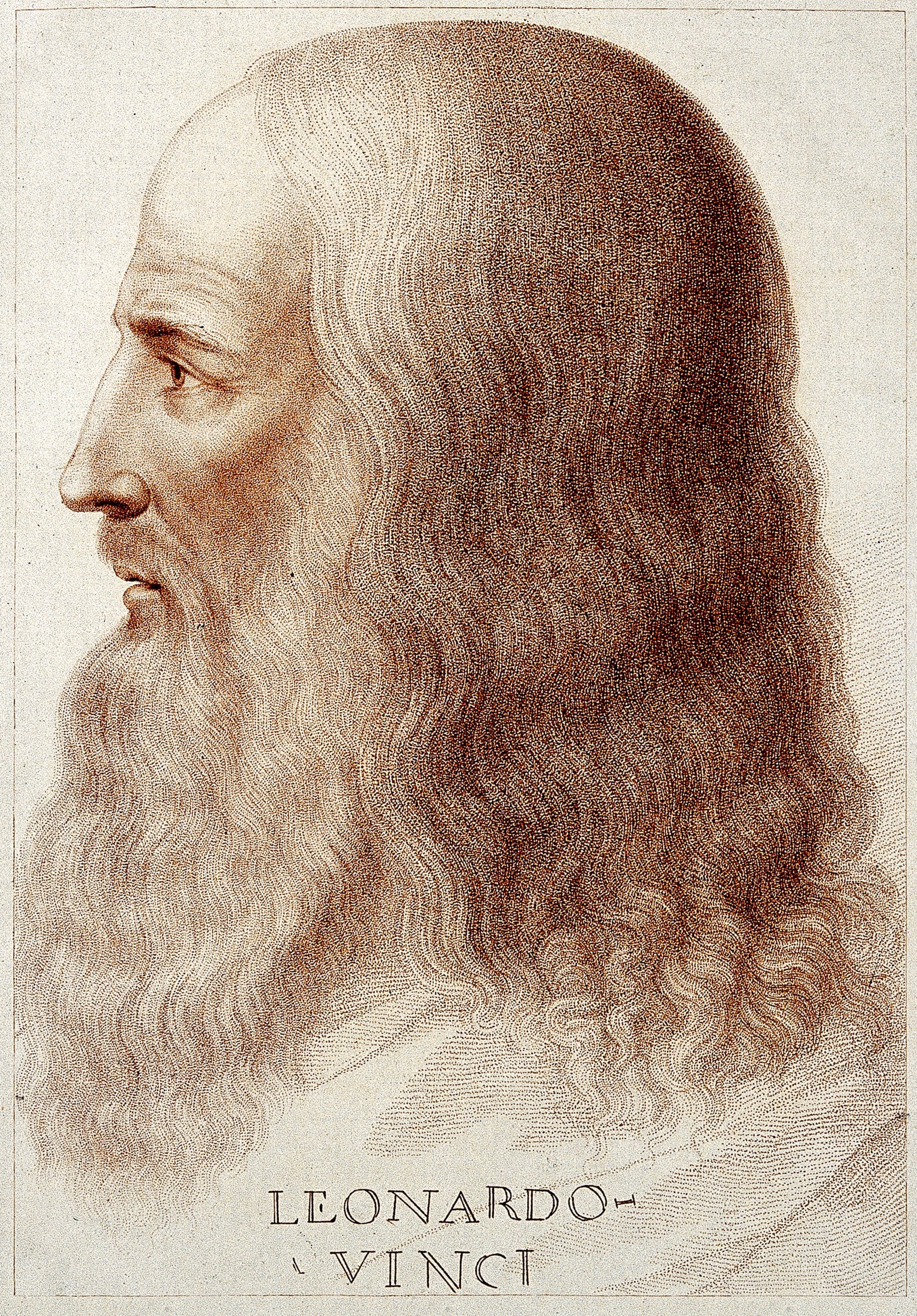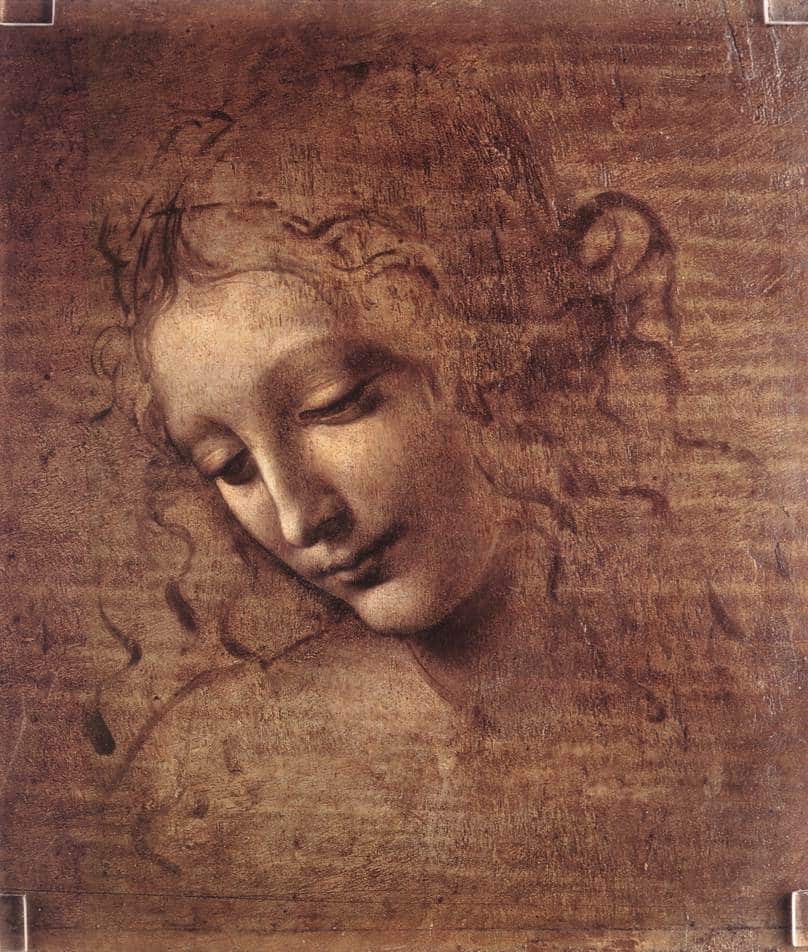Often deemed as one of the most prolific and talented artists in the history, Leonardo da Vinci was born in Florence, Italy on 15 April 1452. He produced many artworks, majority of which are considered as masterpieces, and was an avid observer of the relationship between nature and men.
Therefore, he also designed various gears, studied anatomy, was interested in science and for all these qualities he is considered as a great polymath. Due to his versatile artisanry, he left most of his works unfinished. Majority of his works are still under scrutiny and are subject to speculations about their contents. After a life full of art and science, Leonardo died in France on 2 May 1519.

Portrait of Leonardo Da Vinci
Here are some of his greatest artworks:
Mona Lisa (c. 1503)
Known as the greatest work of Leonardo Da Vinci, Mona Lisa is also one of the most renowned paintings of our time. Having been painted upon the commission of the merchant Francesco Giocondo, the portrait of Mona Lisa is also known as ‘‘La Gioconda’’ which means ‘‘joyfulness.’’
The portrait shows a seated woman dressed in Florentine fashion in front of a clouded landscape without clear lines which was achieved by using sfumato technique and was done with oil on panel and its original size is 77×53 cm. Mona Lisa makes direct eye contact with the spectators with a cryptic smile on her lips.

View of an authenticated contemporary copy of Leonardo da Vinci’s Mona Lisa presented at the Prado Museum on February 1, 2012 after it was found in its vaults. Photo Credit: AFP PHOTO / JAVIER SORIANO via Wikimedia Commons.
The aura and the pose of the lady, together with the obscure background of nature, has given way to so many questions and speculations about the painting. Rather than simply being looked at as an object, Mona Lisa directly looks at the observer from the painting which gives the feeling that there is an interaction with the spectators.
Today, Mona Lisa is exhibited in Louvre Museum and cannot be bought or sold due to French laws. Apart from these qualities, the painting also holds the world record for having the highest ever insurance value for an art object.
Why is Leonardo Da Vinci’s Mona Lisa so famous?
Those unacquainted with artistic expression might question the notoriety of a modest depiction of an ostensibly inconspicuous woman. Perhaps it is the very authenticity of the portrayal that captivates. The Mona Lisa, an emblematic masterpiece, owes its acclaim to myriad contributing factors.
Leonardo Da Vinci, a pioneer of his epoch, never truly ceased laboring upon this portrayal. Commencing in 1503 with oil on poplar wood, he persistently refined the piece until 1507. Scholarly evidence suggests Da Vinci made intermittent enhancements until his demise in 1519.
His meticulousness imbued the portrait with unparalleled distinctiveness. Employing visionary methods and elements, Da Vinci masterfully crafted the subject’s delicately contoured visage and enigmatic grin. Sfumato, an innovative technique, facilitated the portrayal of shadows and textures through nuanced gradations of illumination. A polymath, Da Vinci applied his scientific acumen to infuse the Mona Lisa with verisimilitude. Translucent layers of oil imparted a luminous quality to the subject’s epidermis, while his research on fluctuating landscapes enlivened the backdrop; both elements were groundbreaking in his epoch.

Mona Lisa, detail, smile
Notwithstanding Da Vinci’s prowess and the Mona Lisa’s allure captivating Italian audiences in the 1500s, it took nearly three centuries posthumously for the world to acknowledge it as a quintessential Renaissance masterpiece. The Renaissance, a cultural resurgence spanning the 14th to the 17th centuries, emphasized erudition, classical literature, and realistic portrayals in art. The Mona Lisa’s association with this movement solidified its position in Western art history, elevating its estimated value to $860 million US dollars circa 2020.
Visitors to the Louvre in France cannot overlook the stringent security measures safeguarding this treasure. Encased in glass and flanked by armed custodians, the Mona Lisa remains tantalizingly out of reach. Cautionary placards abound, entreating patrons to eschew flash photography to preserve the painting’s integrity. Observers may also find themselves taken aback by its diminutive dimensions: a mere thirty inches in height and twenty-one inches in width.
The Last Supper (c. 1495- 98)
It is a renowned fresco painted on the refectory, or Cenacolo, of Santa Maria delle Grazie Milano, that was commissioned by Ludovico Sforza, the Duke of Milan. The fresco depicts a scene where Christ reveals that one of his apostles will betray him. It illustrates the following shock and rage among the disciples who show various degrees of agitation.

Famous Artworks of Leonardo da Vinci : The Last Supper
They share wine and bread symbolising the first celebration of the Eucharist. Together with the usage of perspective, the attention is drawn to Christ and the serene expression on his face highlights his ever-forgiving nature. He does not carry a halo, but the window behind him forms a natural halo for him.
Moreover, the disciples do not carry halos contrary to their depictions in the other contemporary arts which contributes to the Last Supper’s fame. Since Da Vinci painted the fresco on a dry plastered wall, over the years it received considerable damage. The wall of the church also got bombarded during the World War II and underwent some serious disasters. However, The Last Supper is still as famous as ever.
Lady With An Ermine (c. 1489)
The model in the painting is Cecilia Gallerani who was among the mistresses of Ludovico Sforza, the Duke of Milan. The ermine that Cecilia holds mirrors her elegant pose accentuating the mystic nature of the work; moreover, it is the heraldic animal of the Duke of Milan. The musculature of the animal shows that it’s a male which is an indication of Leonardo’s interest in animal symbolism and anatomy. The painting was done with oil paint on wood and has been over-painted with different additions over the years, and it is now in Cracow, Poland.

Famous Artworks of Leonardo da Vinci : Portrait of Cecilia Gallerani (Lady with an Ermine)
Vitruvian Man (c. 1487)
The drawing gets his name from the famous Roman architect Vitruvius Pollio since it contains his notes in it. The male figure displays the ideal proportions of the human body and marks Da Vinci’s interest in anatomy, golden ratio, and man’s relation to nature.

Vitruvian Man
In the Renaissance, men were ranked as the highest among God’s creatures, and Vitruvian Man represents this idea with its proportional measures. According to this ideal, men can achieve godliness by expanding their knowledge, studying science, and creating art which is exactly what Da Vinci did. It is in Venice’s Galleria dell’Academia and is not always displayed for the public.
St. John The Baptist (c. 1513-16)
This painting of Da Vinci is considered to be his last painting. It is an oil painting on wood and the original size of the work was 69×57 cm. In accordance with St. John’s representation of baptism, the pointing gesture towards the heavens refers to salvation through baptism.

Famous Artworks of Leonardo da Vinci – Saint John the Baptist
At the time, this painting caused criticism since he was depicted with hermaphroditical features and with a knowing smile which contrasts with the traditional representations of religious figures. The lightness of the face in contrast to the darkness around the figure might suggest St. John’s humble yet strong will. The work is now in Louvre Museum.
Virgin of the Rocks (c. 1483-87)
There are two different versions of this painting which handle the same subject with different details in composition, the lighting, the colours, and the usage of the sfumato technique. Although the exact dates of the paintings are unknown, it is widely believed that the first version is in the Louvre while the second version is in the National Gallery of London.

Virgin of the Rocks
The paintings depict Mary and the child Jesus with the infant John the Baptist, and the angel Uriel within a rocky setting which gives the paintings their name. The figures were painted in a pyramidal composition and considered as the perfect example of Leonardo’s sfumato technique.
Salvator Mundi (c. 1500)
The name of the painting is a reference to the Gospel of John, 4:14 where Christ was mentioned as the ‘‘Saviour of the World.’’ The orb symbolizes the world, and the holder becomes the ruling power. In the painting the orb symbolises the celestial sphere of the heavens while Christ makes a cross sign with his right hand in his blue Renaissance robe. The painting was thought to be lost until its rediscovery in 2005, and it set a record for the most expensive painting ever to be sold at a public auction in 2017.

Salvator Mundi
Head of a Woman (c. 1500- 10)
This drawing is also known as ‘La Scapigliata’ meaning ‘‘dishevelled’’ which is fitting considering the way the young woman’s hair is scattered. The young woman’s eyes are downcast, and her features are soft. The model’s identity is unknown but due to her similarity with Mary in the Virgin of the Rocks painting, it suggests that this drawing might have been used as a model for Mary.

La Scapigliata
The drawing is unfinished aside from the face of the young woman, which might give an example of Leonardo’s fluid style of portraying the expressions. It was drawn with some pigment which is similar to the treatment of other incomplete works of Leonardo. The drawing is currently located in Galleria Nazionale in Parma.








Leave a Comment